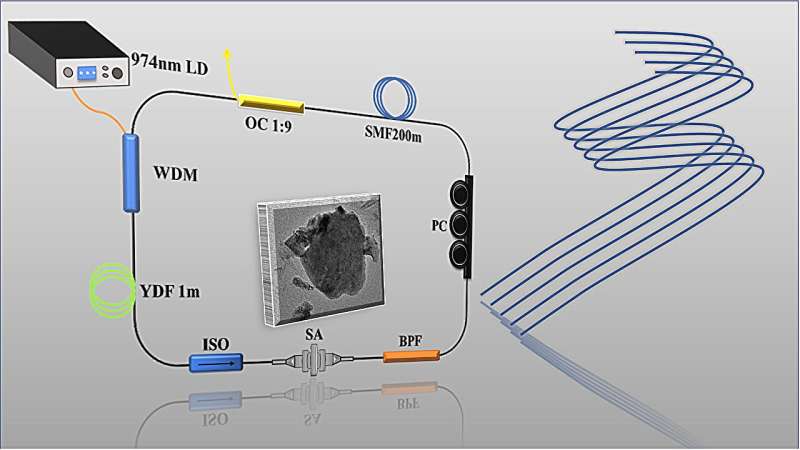This article has been reviewed according to Science X's editorial process and policies. Editors have highlighted the following attributes while ensuring the content's credibility:
fact-checked
proofread
Composite 2D materials for fiber lasers show promise for ultrafast optics applications

The formation of dissipative solitons is influenced by several factors, such as spectral filtering effects and Kerr nonlinear effects. This interaction leads to the possibility of mode locking over a wide range of parameters, generating pulses whose type and evolution are completely different from the conventional physical laws and optical properties, tolerating higher nonlinear effects and thus effectively avoiding the generation of pulse splitting. The physical laws and optical properties offer a major improvement over the conventional optical pulse.
Researchers led by Prof. Haikun Zhang at University of Jinan (UJN) designed for use two materials with different optical properties, BP and SnSe2, to assemble into a heterojunction by stacking them together using van der Waals forces, so that the materials can maintain their respective optical properties while achieving electron migration and inter band leap through interlayer coupling, thus achieving optical synergy, and the composite material is further optimized for optoelectronic properties.
The work titled "Picosecond dissipative soliton generation from an ytterbium-doped fiber laser based on BP/SnSe2-PVA mixture saturable absorber" was published in Frontiers of Optoelectronics.
The composites were fabricated into saturable absorbers to be prepared as fiber lasers, showing the great potential of the composites composed of two 2D materials for ultrafast optics applications.
More information: Yuting Ouyang et al, Picosecond dissipative soliton generation from an ytterbium-doped fiber laser based on a BP/SnSe2-PVA mixture saturable absorber, Frontiers of Optoelectronics (2023). DOI: 10.1007/s12200-023-00074-3
Provided by Frontiers Journals




















